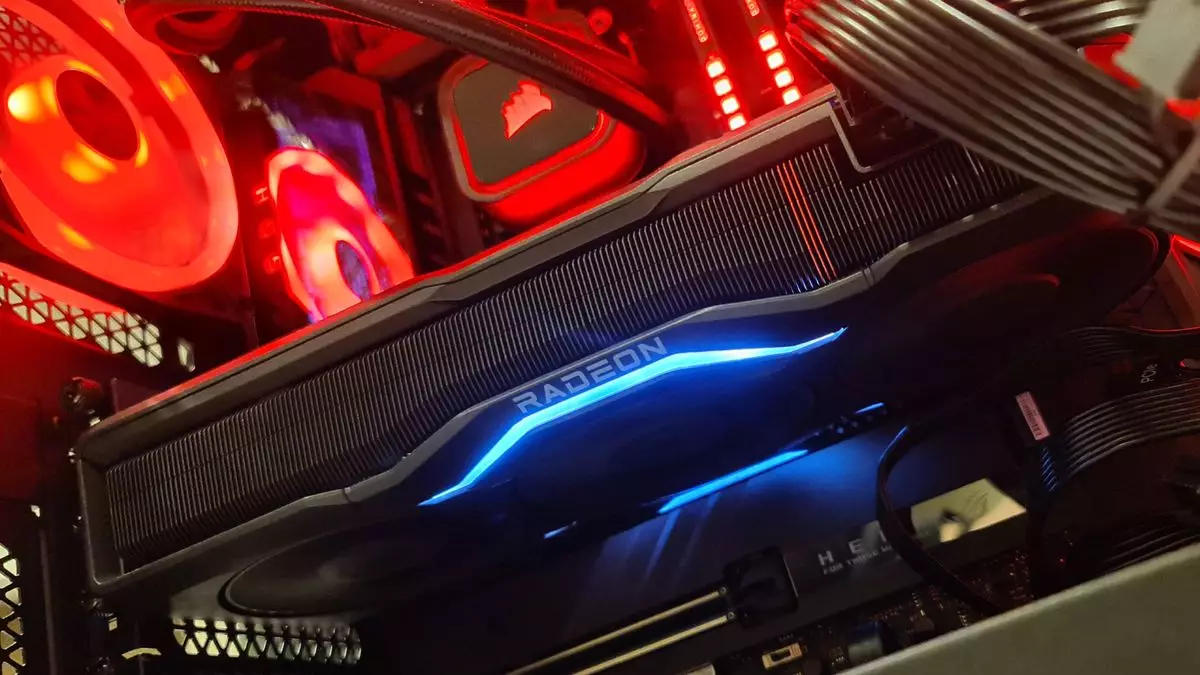As the tech market eagerly anticipates the forthcoming Nvidia GeForce RTX 50-series and AMD Radeon RX 8000-series graphics cards, a vital yet often overlooked aspect comes to the forefront: graphics software. These advancements are not solely reliant on powerful hardware; the software that drives them plays a crucial role in optimizing performance and user experience. AMD’s latest release, Adrenalin 24.9.1, serves as a timely reminder of this truth, showcasing enhancements that promise to revolutionize gaming with a claimed performance boost of up to 2.5 times. The spotlight shines on the arrival of second-generation AMD Fluid Motion Frames (AFMF 2), a technology previously in beta phases.
AFMF technology is AMD’s answer to the increasing demand for smoother frame rates in gaming without the need for game-specific optimizations. While first-generation AFMF laid the groundwork, AMF 2 aims to refine the technology further, introducing new optimizations and tunable settings designed to enhance the overall experience. Key improvements include AI-optimized enhancements targeted at boosting visual quality, reducing latency, and enhancing performance specifically for integrated graphics.
Unlike other solutions that require per-game adaptation—such as Nvidia’s DLSS—AFMF operates at a driver level, offering a more universal approach. This versatility means gamers can turn it on or off at will, yet it also implies that the lack of tailored optimizations per game may limit its effectiveness. Nonetheless, AMD claims their charts demonstrate an average of 2.5x higher frame rates in select games, particularly under the use of HYPR-RX and FSR 2. However, this claim requires a careful examination, as attributing the bulk of these performance improvements solely to AFMF 2 is misleading.
In testing conducted by various tech analysts, including Nick, the performance benchmarks of AFMF 2 were ultimately less impressive than AMD’s promotional material suggests. The performance benefits, although present, appear slight when compared to the first generation of AFMF. The enhancements include improved latency and handling of fast-motion scenes, which, while beneficial, do not drastically overhaul the gaming experience.
It’s crucial for users to temper their expectations; although the AFMF 2 is a step forward, it should not be regarded as a groundbreaking solution. The practical utility of AFMF for games lacking FSR 3 support means it serves primarily as an auxiliary feature—one that may not resonate with every gamer but can undeniably enhance gameplay for some.
Broader Implications and Market Trends
AMD’s Adrenalin 24.9.1 driver release comes at a strategic moment, particularly for handheld gaming devices, which predominantly feature AMD Radeon GPUs. With the integration of AFMF technology, manufacturers can market their handheld devices as providing an elevated gaming experience, even with hardware constraints.
Additionally, the introduction of Geometric Downscaling in this driver release caters to the needs of gamers using smaller display outputs. This feature works to reduce visual artifacts and aliasing when videos run in minimized resolutions, signifying AMD’s commitment to delivering a comprehensive user experience.
While AMD’s Adrenalin 24.9.1 driver, featuring AFMF 2, does promise enhanced gaming performance with some notable improvements, it should not be considered a total game-changer. Customers should view it as an iterative update that builds upon existing frameworks rather than a revolutionary leap in technology. As with all advancements in gaming graphics, users must navigate these innovations with realistic expectations and an understanding of the nuances involved in driver-level optimizations. As the gaming landscape evolves with these upcoming graphics cards, so too must our understanding of the technologies that support them. AMD has taken steps in the right direction, and it will be intriguing to see how their software ecosystem adapts alongside future hardware developments.

